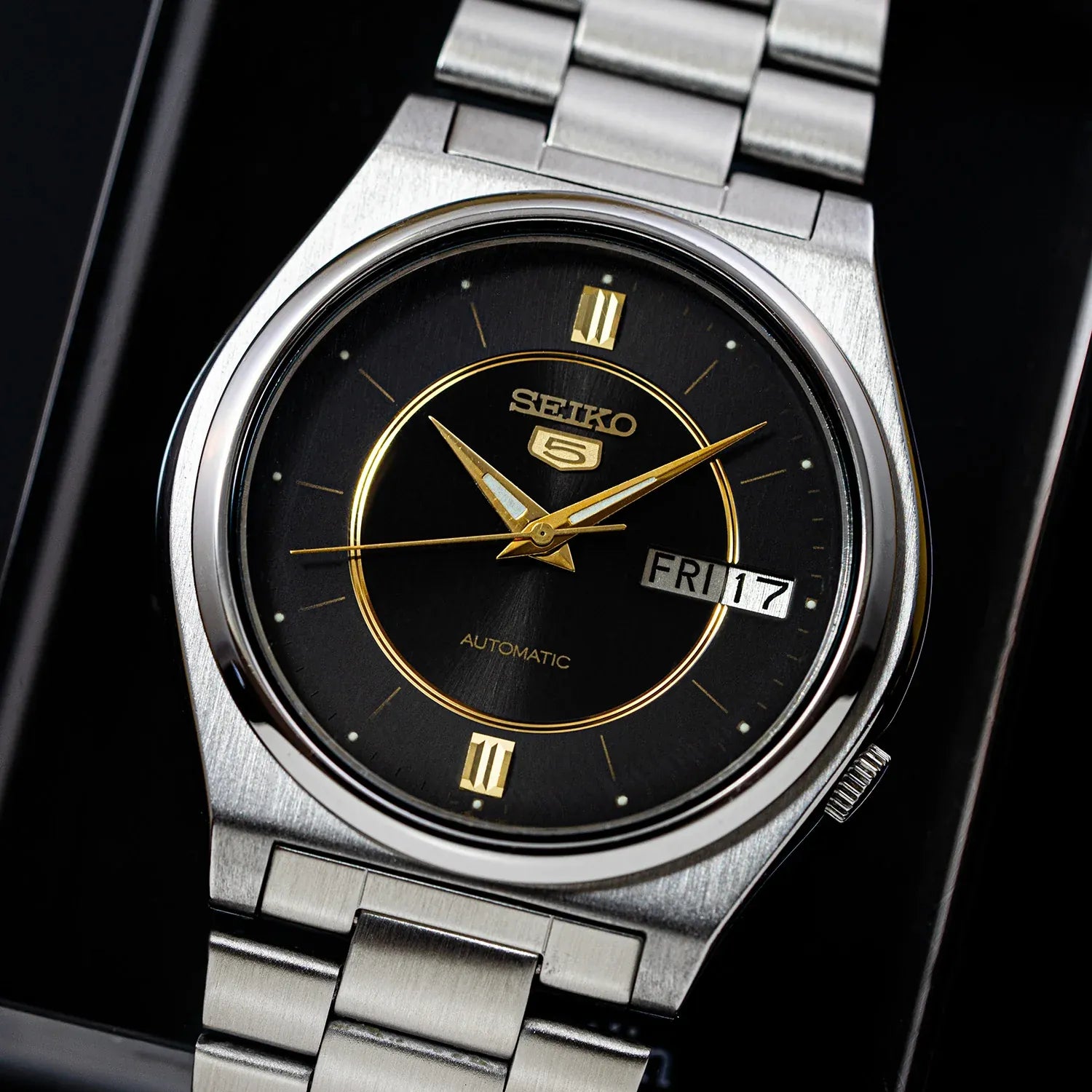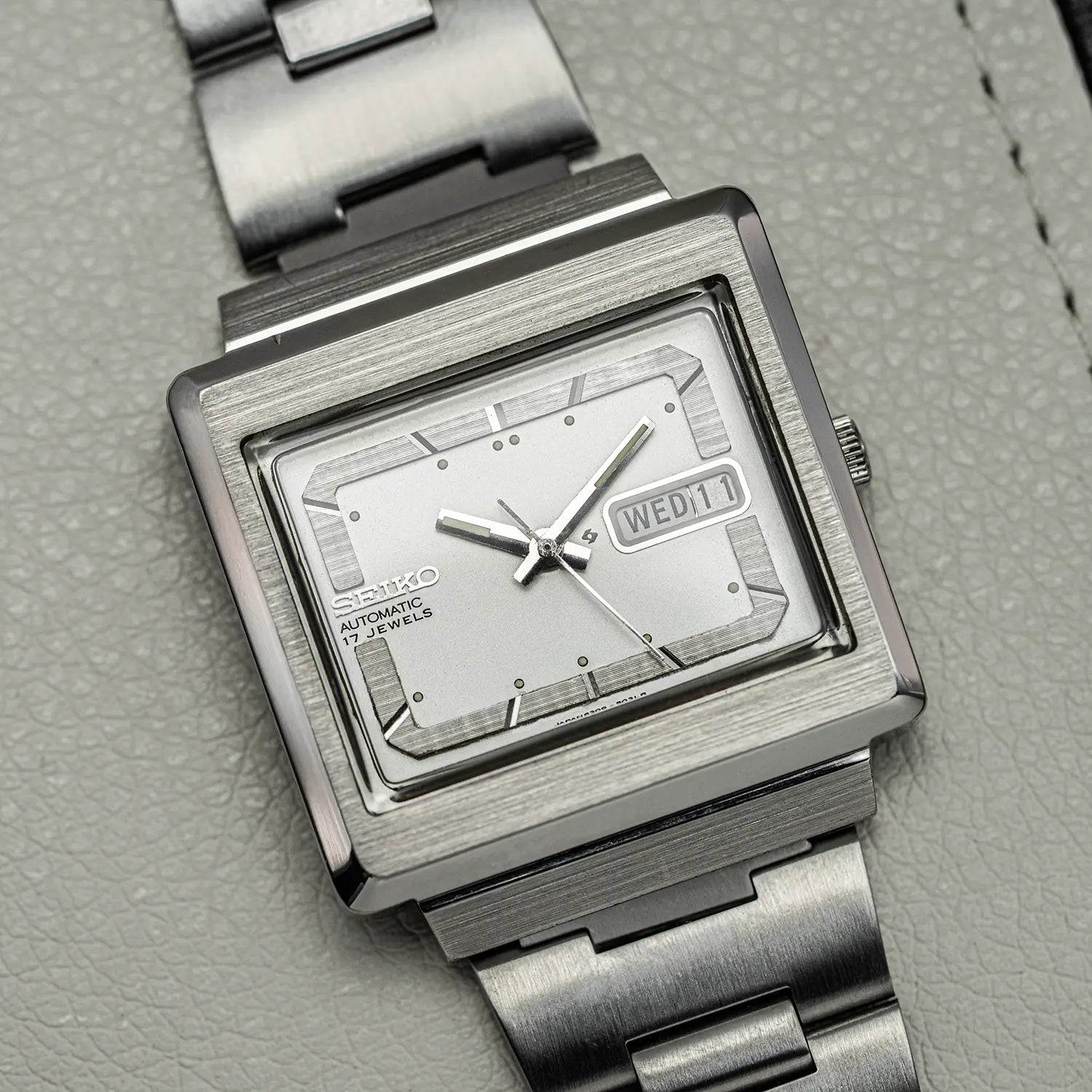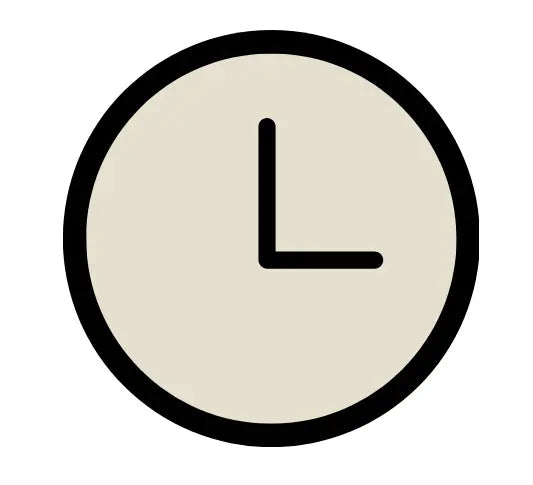Seiko Caliber 7009 — Beginner’s Guide
The Seiko 7009 is the beating heart of many much-loved Seiko 5 dress pieces from the late 1970s through the 1980s. It’s a no-nonsense automatic with day-date, typically slim cases, and versatile sizing that wears well on most wrists. This guide focuses on what the 7009 is (and isn’t), how to recognize the period styles, what to check before buying, realistic service expectations, and how to style it—illustrated with current and archive references such as 7009-8431, 7009-3170, 7009-3180, and 7009-876A.

Fast Facts
Type: Automatic (self-winding), non-hand-winding, non-hacking seconds
Functions: Hours, minutes, central seconds, day-date (often bilingual day wheels, market-dependent)
Beat rate: 21,600 vph (6 beats per second)
Jewels: Typically 17 jewels (market/range variations exist)
Power reserve: ~40 hours (condition-dependent, as with all vintage)
Seiko 5 DNA: Automatic + day-date + practical case/water protection for daily wear, with the crown usually recessed at 4 o’clock (varies with case)
Era: Late 1970s–1980s (peak popularity in the 1980s)
Typical sizes: Roughly 36–38 mm across (model-dependent), comfortable lug-to-lug for medium wrists
Era & Design Context
During the late 1970s and 1980s, Seiko leaned into clean dress dials, slim cases, and practical daily-wear watches. The 7009 powered a wide spread of references—from ultra-simple, applied-index dials to sunburst finishes and bolder fonts on day/date wheels. Compared to toolier Seiko lines, 7009 watches were made to slip under a cuff and just keep going.

Examples you’ll often see:
7009-8431 (1976)
7009-3170 (1989)
7009-3180 (1985)
7009-876A (1983)
How to Identify a Good 7009 Example
Dial & hands
Check original printing (logo crispness, minute track alignment), hand length (minute hand should meet the indices correctly), and lume plots (consistent aging rather than bright/uneven relume).
Day/date windows should be level; bilingual day wheels are common and a plus for many collectors.
Case & crown
Expect period-correct finishing: radial or linear brushing with polished bevels on some cases.
Look for sharp edges rather than heavy rounding from polishing.
Crown may be unsigned or signed depending on case design/market; function over signature is normal for Seiko 5.

Crystal
Many 7009 dress models used hardlex/mineral crystals. Light marks are typical; deep chips or edge cracks are a red flag.
Movement health
Smooth automatic winding; date/day change should be positive around midnight.
Amplitude and rate depend on service history; steady running over 24–48 hours is a good sign.
Bracelet/strap
Original bracelets existed but are often missing on vintage pieces. Leather (18 mm is common) suits the dress intent; period-style folded-link steel bracelets look great when available and sized correctly.


Servicing & Parts Reality
The 7009 is known for straightforward servicing and decent parts availability compared with many vintage automatics.
A routine service (clean/oil/regulate, gaskets) every few years is reasonable if the watch is a regular wearer.
Day/date mechanisms are robust; if quick-setting feels vague or jumps erratically, budget for inspection rather than forcing the changeover.
As always with vintage, performance after service depends on prior wear, cleanliness, and parts condition.


Recommended Models to Consider
7009-8431 (1976) — classic dress; applied markers; clean minute track
7009-3170 (1989) — late-’80s geometry; slightly crisper case lines
7009-3180 (1985) — matte dial; understated versatility
7009-876A (1983) — bolder indices/fonts; great value entry into vintage Seiko
Nice comparison pieces in stock/rotation:
Seiko 5 7019-7390 (1977) — sibling family, slightly different dial character
Seiko 7025-8120 (1979) — a transitional dress feel from the ’70s
Seiko 7S26-8760 (1997) — later “workhorse” era if you want a 1990s step
FAQ
Q: Does the 7009 hand-wind or hack?
A: No. It’s automatic-only (no manual winding via crown) and does not hack seconds.
Q: What’s the beat rate?
A: 21,600 vph (6 ticks per second).
Q: How long is the power reserve?
A: Around 40 hours in healthy condition.
Q: Are bilingual day wheels original?
A: Yes—commonly supplied depending on market (e.g., English + Kanji/Spanish/Arabic/Greek).
Q: Is a polished case a deal-breaker?
A: Light, sympathetic refinishing is fine; heavy softening of edges lowers originality and value.
Fun Facts & Trivia
“The 5” formula: automatic winding, day-date, protected crown at/near 4, durable case/bracelet, everyday water protection.
Wearability secret: short lug-to-lug and slim mid-cases make many 7009s flatter and easier to wear than typical ’70s/’80s pieces.
Language hunt: bilingual day wheels add personality and sometimes a small premium.
Template maker: the 7009 set expectations for later mass Seiko automatics (e.g., 7S26).











